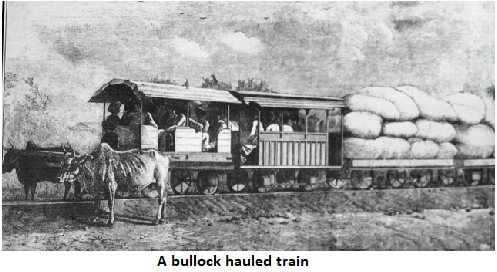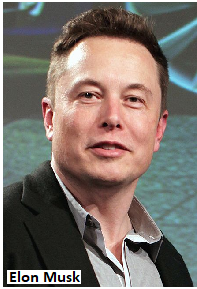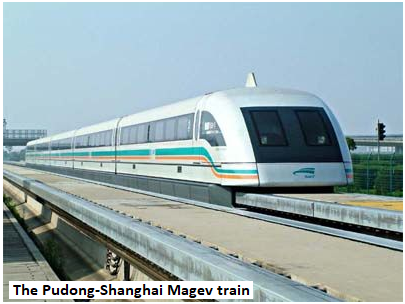Skimming the ground with no wind in one’s face could be the new mode of inter-city transit, says S.Ananthanarayanan.
The railways were developed in the course of finding better ways of transport than wagons on mud roads. Hard-wearing steel rails formed the ‘permanent way’ for a train of wagons to move goods and passengers with speed and over long distances.

Those rails are now welded, without a break for kilometres on end, wagon axels have roller bearings and speeds reach over 300 km an hour. Going faster, however, is challenging, because of friction at the wheel and the resistance of the air, both of which grow enormously at high speeds. A team at the Technology University at Delft, in the Netherlands, is trying out a new concept that overcomes these hurdles, to connect cities at the speed of sound.
The new concept, first formally stated by Elon Musk, inventor, entrepreneur, founder of Tesla, the electric car company, uses two devices to reduce resistance. One is air pressure or magnetic levitation to sidestep the rail-wheel resistance. The other is to drive the vehicle through a tube in a near vacuum, to avoid air resistance. The TGV, the high-speed train running on a dedicated track, replaced air routes because it connected city-centres. Elon Musk’s vision of Los Angeles-San Francisco (600 km) in 35 minutes, would better air speeds even during the run.

The conventional train is supported and guided by the rails and the wheel flange. It is also propelled by the friction of the wheel turning against the rails. For this to work, and for the train to be stable at high speed, the locomotive and the coaches need to be heavy. Weight and speed, however, increase the friction at the rail and axel bearings, which limits how fast conventional trains can go.
Holding the train off the track would be a way to avoid this limitation. An early method, developed in Germany, was to support the train just above the tracks by electro-magnets. This is the method used in the first commercial application, which connects the Pudong airport to the Shanghai Metro. The train reaches a top speed of 431 km an hour and covers 30-km in 7 minutes and 20 seconds. A Japanese method, said to be superior, is to place magnets in the floor of the train and push the train up by repelling electro-magnets. This method has been tested at 600 km an hour. In both the methods, the electromagnets need be powered only where the train is running and there can be more than one power supply, for safety in case of power failure.

The method in the Elon Musk’s concept, the ‘hyperloop’, as he named it, was to use high pressure air jets to lift a coach on to an ‘air cushion’. The coach would then glide over the track without direct contact. This would be like the plastic disk, in the indoor game of ‘air hockey, where the disk is supported by air jets emerging from tiny holes in the board.
Air resistance
The other major impediment to speed, in the conventional technology, is air resistance. We have all experienced it when going downhill on a bicycle and we may know that it is air resistance that slows raindrops when they fall from rain clouds. The drops speed up for just the first seconds, till the air resistance is equal to the force of gravity, and the speed stays at about 8 meters a second. This is the same reason that a parachutist can delay opening her parachute – she never falls faster than 53 meter a second!
Air resistance, however, is no good thing when a train, or an airplane, is trying to catch speed. The crucial feature is that air resistance not only gets stronger when an object moves faster, it gets stronger by the cube of object’s speed, or the speed multiplied by itself thrice over. It is not difficult to understand why – if we move 5 times faster than before, we meet five times the number of air molecules. We also meet them 5 times harder. And then, every second, we overcome this force over 5 times the distance. The number, ‘5’ thus gets multiplied three times, to give us the cube!
The air resistance of a train hence increases 2x2x2=8 times when its speed doubles. And the resistance of a train at 300 km an hour is 5x5x5=125 times the resistance at 60 km an hour. At 300 km an hour, the air resistance is estimated to account for 85% of the total resistance the train has to overcome. This is also the reason that long distance aircraft fly most of the time at high altitudes, where there is less air resistance.
The hyperloop answer, to reach high speeds, is to run an airliner-size module through a tunnel from which the air had been evacuated. This is not something entirely unusual. Even conventional, underground metro systems need to handle the air in the tunnels. When a train moves forward, it acts as a piston and pushes all the air in front. At the same time, it creates a partial vacuum in the space behind, which would drag the train back. To avoid both effects, Metro train tunnels use elaborate ‘ventilation’ systems
Effectively the same technology can create a near-vacuum in the tubes through which the ‘hyperloop’ coach travels. The coach itself, of course would be sealed and pressurised, for the comfort of passengers.
The result is then a system in which a vehicle moves with no frictional resistance, as it is not in contact with any surface, and with no air resistance, as the space in which it moves has been evacuated. The question that remains is, what mechanism makes the vehicle move forward?
Propulsion
Loyal to the policy of avoiding contact, with the rails or with the air, the technology to push the coach in the hyperloop tube is ‘contactless’. Electric motors that we used for almost a century worked because a coil of wire with a current feels a force when it is in the range of a magnet. The coil hence turns around till the magnetic fields are aligned. And then, to keep the movement going, the direction of the current is reversed, so that turning force continues to act. This is done by switching the electric connections to the coil when the coil rotates and presents a different portion to the ‘brushes’ that make the electrical contact.
This changed with the use of alternating current, which changes direction, usually 50 times a second. The changing current in a coil creates a current and magnetic effects in another coil and the pair can act like a pair of magnets that are switching their poles. A motor based on this effect is an ‘induction motor’, as it depends on ‘induced’ magnetism, rather than a real magnet. Induction motors hence have no ‘brush’ contacts to maintain!
The same idea, of coils carrying alternating currents, has been modified for propelling or retarding the hyperloop coach, without making physical contact. Propulsion coils are thus ranged along the hyperloop tube, and in the body of the coach. With little resistance to overcome, the arrangement soon drives the coach to speeds quite beyond the reach of the existing technology.
Several start-ups the world over are working to implement Elon Musk’s idea of mass transit at the speed of sound. Earlier this year, a team from the Technology University at Delft topped a contest for the most imaginative hyperloop design and they have created a company to take the dream forward.
------------------------------------------------------------------------------------------